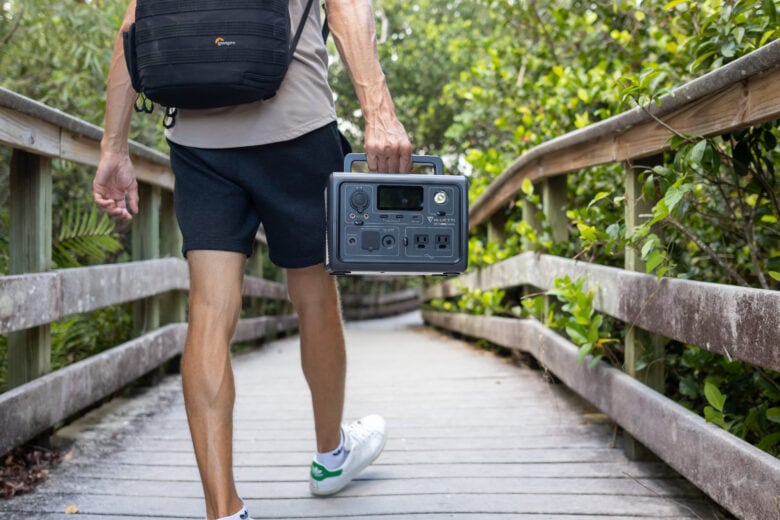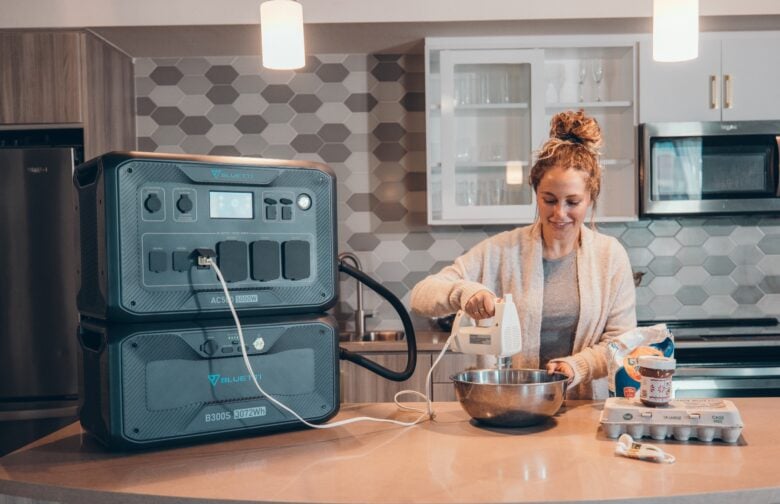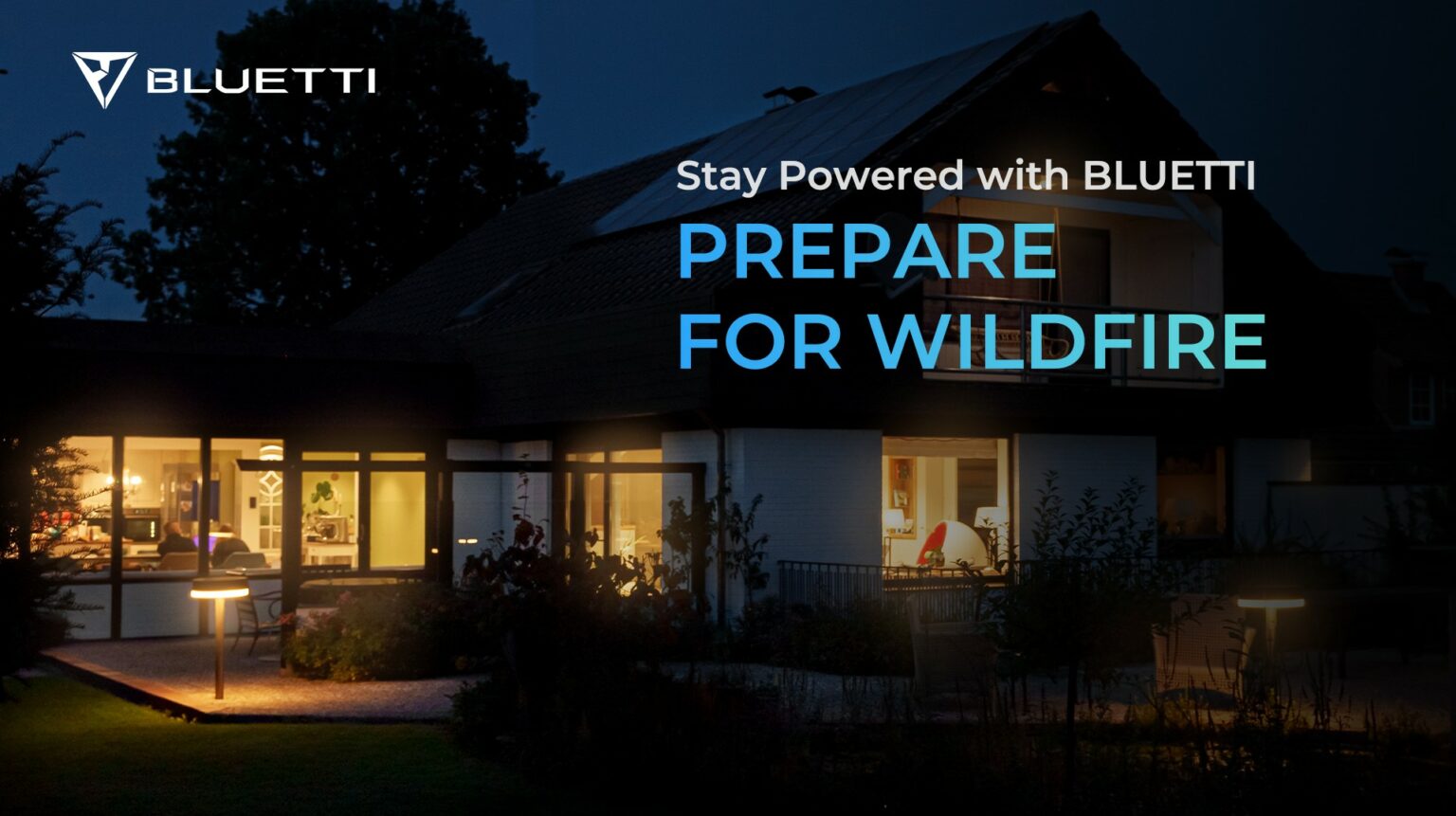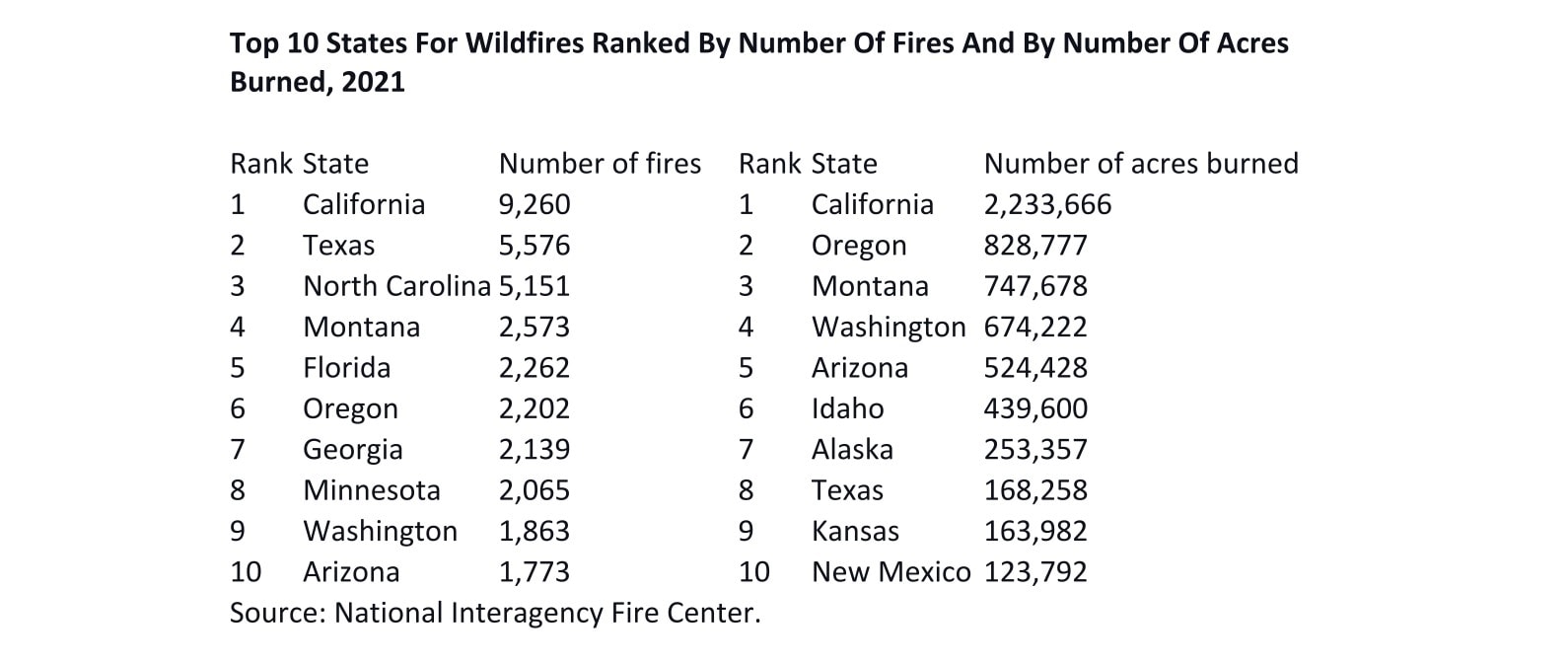Canada’s 2,000 wildfires made news all over the United States when the resulting smoke drifted south in June. The fires burned more than 14 million acres, serving as a wake-up call for heightened attention to wildfire preparedness — especially because the United States is no stranger to its own conflagrations, with more than 72,000 communities at risk.
How to prepare for, handle and recover from wildfires
In recent years, the United States experienced record-breaking wildfire seasons, with an average of 22,946 wildfires per year between 2013 and 2022. In 2021 alone, the state of California dealt with 9,260 fires, more than any other state.
The chart below shows the states with the most wildfires and acreage burned:
However, wildfires can strike any state, depending on conditions. In the United States, nearly 45 million homes are adjacent to or intermingled with wild lands, putting more than hundreds of thousands of people at risk.
And that makes it crucial to devise a plan. Preparing for wildfires is critical to ensure your loved ones and property remain safe. The following guide walks you through steps to take before, during and after a wildfire to reduce risks.
Preparing before a wildfire
1. Stay informed.
The first step to preparing for wildfires is to understand your area’s risks. You should stay up to date on local weather conditions and fire danger levels.
Local news media, emergency management agencies and government-based social media will provide accurate information. Follow them and check the news regularly.
Consider signing up for emergency alerts and notifications from your local government or fire department. Familiarize yourself with nearby evacuation routes and community gathering points.
2. Prepare an emergency kit and power up devices.
When a crisis like a wildfire strikes, you might not have much time to prepare. That’s why you should have an emergency kit standing by.
Your kit should include essentials like nonperishable food, drinking water, medications, first aid, a flashlight, batteries, a battery-powered radio and important documents you don’t want to risk losing. And you should include personal protective items like N95 masks and goggles to reduce health risks from smoke.
Keep your emergency kit in a fireproof and easily accessible place in case you need to evacuate.
To help prepare, invest in a portable power station like Bluetti’s EB series (EB3A, EB55 or EB70S). They will prove especially helpful if you own a lot of devices that need charging. The lightweight power stations offer ample power and multiple outlets, ensuring your devices stay powered during any emergency.
For long-term emergencies, Bluetti’s AC200 series (AC200P and AC200Max) and portable solar panels (PV120S and PV200) can meet your basic power needs for off-grid living in cabins or campgrounds.
3. Develop an emergency plan with evacuation routes.

Photo: Bluetti
Wildfires can spread rapidly without warning. Making a detailed evacuation plan for your family can save lives in critical situations. Get to know established evacuation routes in your community.
Practice following multiple evacuation routes with your family and designate a meeting place outside the danger area where you can unite if separated. Don’t forget to make evacuation plans for your pets, as they are also part of your family.
4. Protect your home.
Even if your home is far from a fire, flying embers can travel up to a mile and ignite your property. Take measures to protect your home by reducing highly combustible materials, such as wood and plant debris, from your yard.
Consider retrofitting parts of your home with flame-resistant materials and coatings. Clean your chimneys and fireplaces regularly to prevent the accumulation of combustible debris.
In addition, make sure your house address number is clearly visible to emergency personnel from the street.
And if possible, set up an outside source of water for firefighting purposes, such as a swimming pool, pond or water tank.
5. Prepare a home-backup power source.
You might not live near wildfire-prone areas, but that doesn’t mean your power won’t go out as a preventative measure or during a related power outage when wildfire emergencies disrupt the utility grid. Blackouts can last for days or even weeks in such situations.
That’s why a reliable home-backup power source is essential. Bluetti’s AC300+B300, AC500+B300S and EP900+B500 systems provide flexible backup power for homes.
With high outputs and capacities, these modular power stations can keep home appliances running during a blackout. The AC300 can deliver up to 3,000W of power. Plus, you can expand its capacity to a maximum 12,288Wh with B300 batteries.
To give an example, an AC300+B300 combo can run an 800W refrigerator for about three hours, and a 40W CPAP machine for more than 65 hours. Using Bluetti’s PV350 and PV420 solar panels, you can charge these power stations to get you through outages in comfort.
What to do during a wildfire

Photo: Bluetti
If a wildfire breaks out near your home, immediately follow evacuation orders and leave the area as directed by authorities. Take prepackaged supplies — including your Bluetti backup power source — capable of sustaining you for several days. Do not attempt to return home until it is officially declared safe.
If you find yourself trapped or unable to evacuate, do the following:
- Close all doors and windows to prevent embers from entering your home.
- Find a safe place indoors, away from windows.
- Cover your nose and mouth with a wet cloth or blanket to avoid inhaling smoke.
- Cool down, listen to bulletins on the radio, and try to stay in contact with the outside world while waiting for rescue.
What to do after a wildfire
Once the wildfire is contained, wait for official clearance to make sure it is safe to return to your home. Check for any remaining hot spots or hazards, such as unstable structures or downed power lines, which could pose a risk.
If your home has been damaged, contact your insurance company to report the situation and initiate the claims process. Document the damage with photos or video to support your claim.
To restore power in case of downed lines or an unstable power grid, use your Bluetti power solutions. The AC200 series and EB series power stations can provide emergency backup power for essential equipment and devices, ensuring you have the power you need during the recovery process.
Wildfires can be devastating, but by taking proactive measures, staying informed and owning the right tools, you can significantly reduce risks and ensure your safety.
Source: Bluetti



